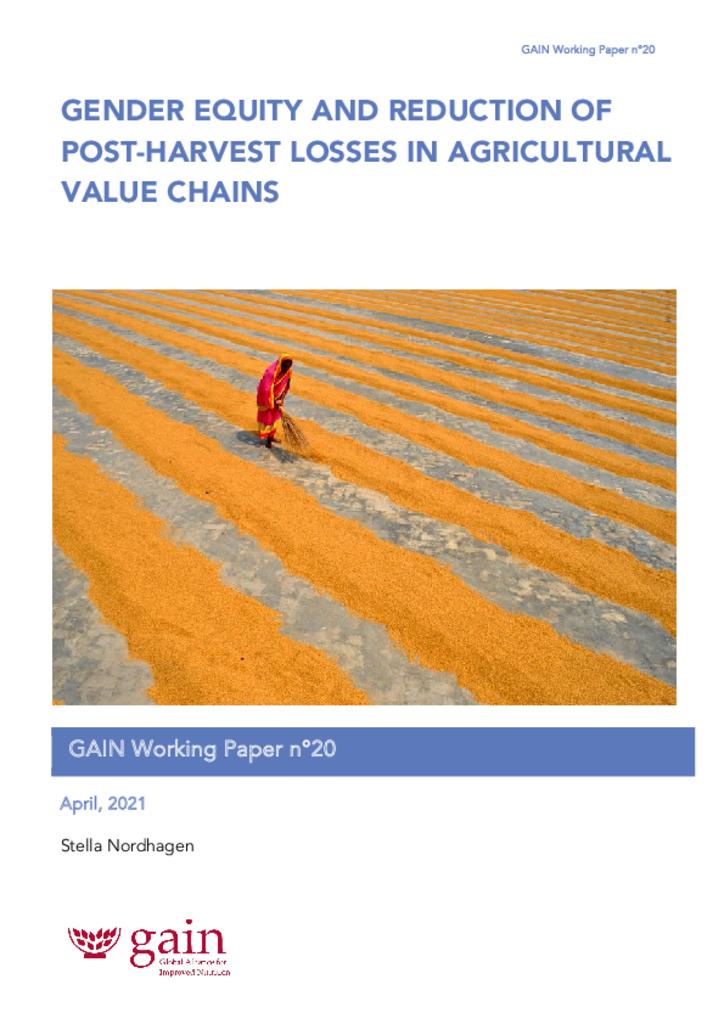High levels of food loss help drive low availability and affordability of nutrient-dense foods such as fresh fruit and vegetables - which, in turn, contribute to poor-quality diets and poor nutrition outcomes in many low- and middle-income countries. Much of this loss occurs at the post-harvest stage, in which women often play a large role, and gender relations shape decisions along agricultural value chains, including adoption and use of technologies that could reduce post-harvest loss. However, there has been limited examination of how gender and gender-equity issues might impact post-harvest loss. As such, this working paper reviews the literature to draw together these two important topics.
The paper first summarises the important role that women play in the post-harvest stage and notes various reasons why they might face different (likely higher) loss rates than men. It then explores barriers women face to the adoption of post-harvest loss-reduction technologies and some of the unintended consequences these technologies may have for women and gender relations.
It highlights important data gaps on the topic of gender and post-harvest loss before discussing ways in which gender and gender equity can be better taken into account in programming related to post-harvest loss reduction.
